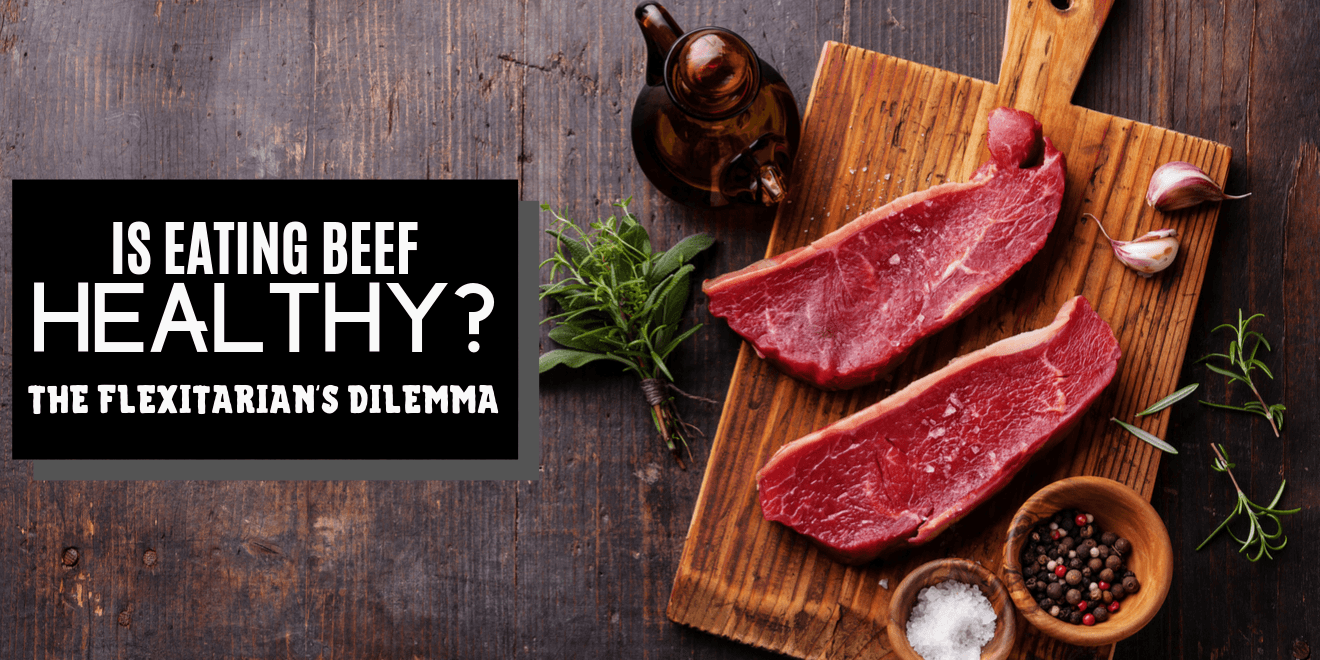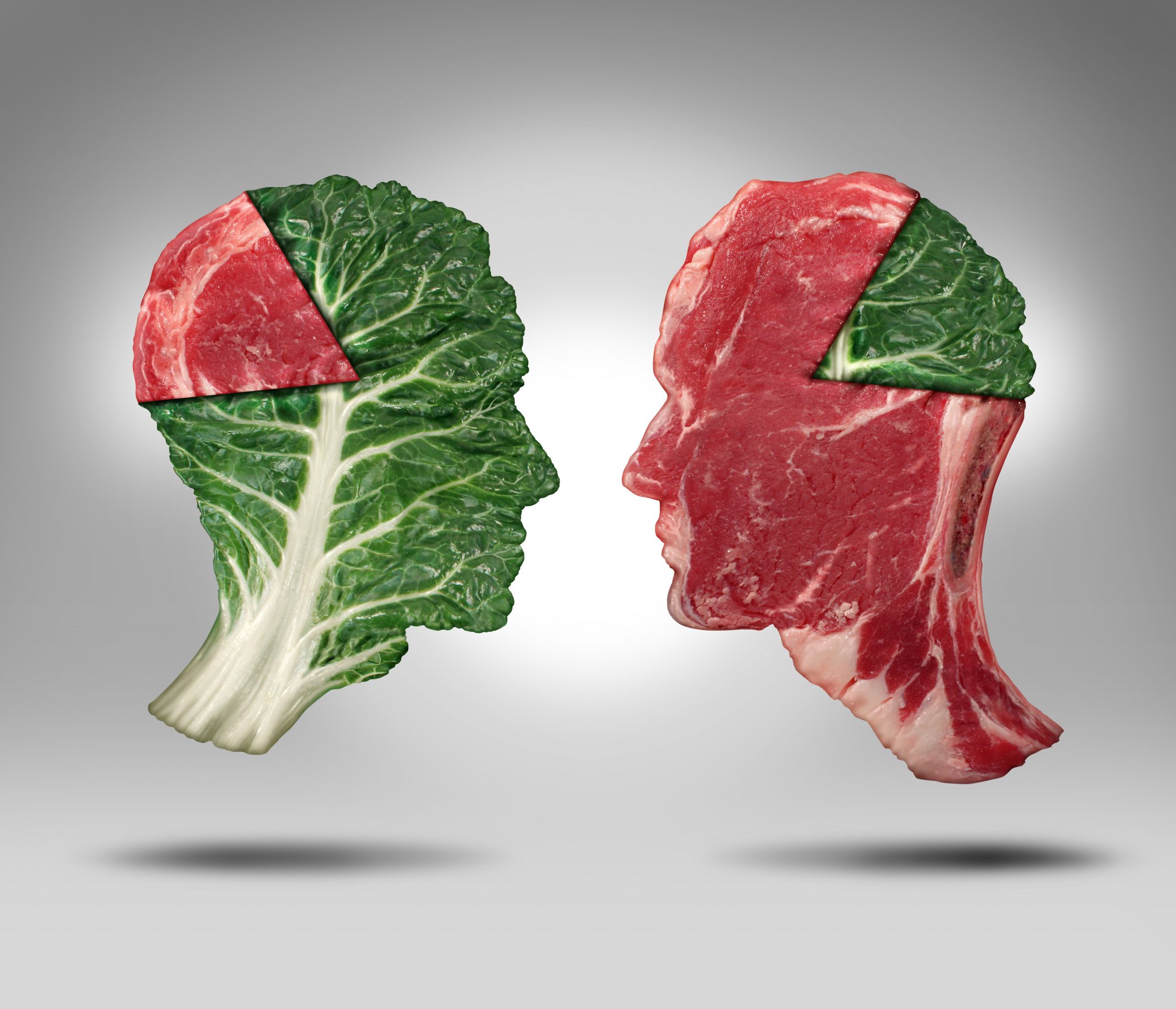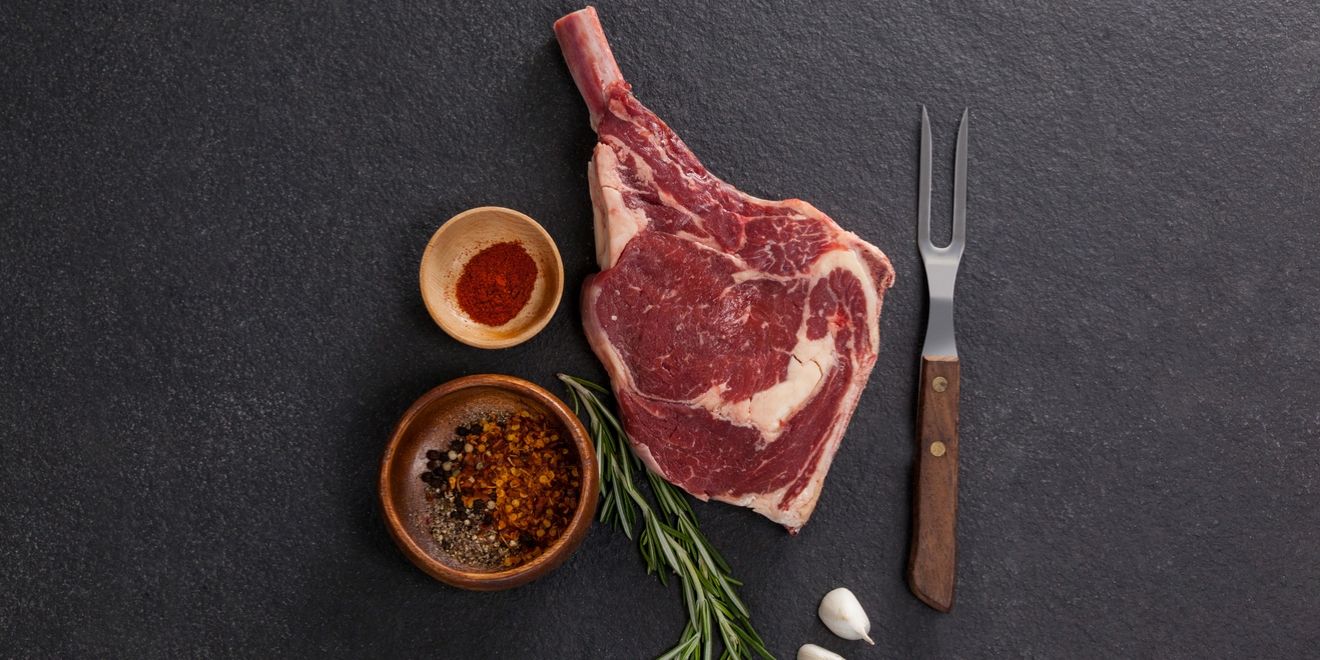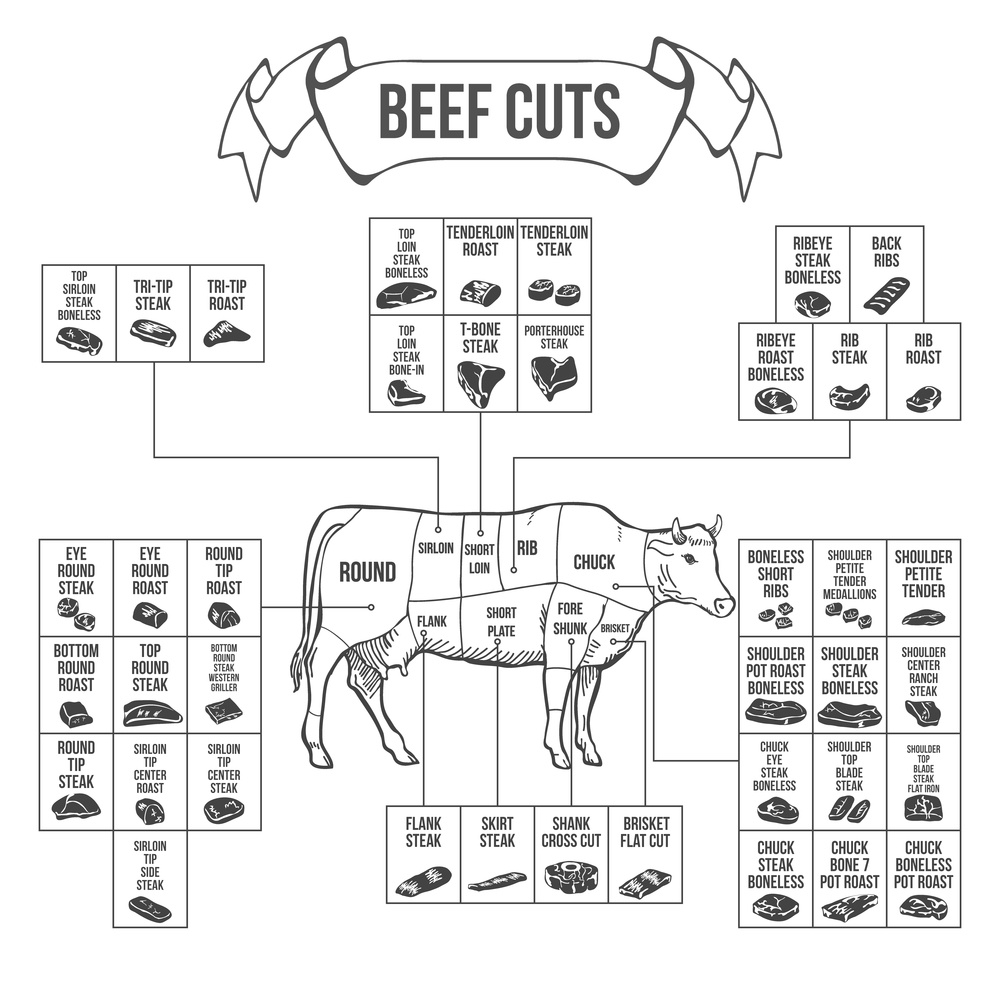Is eating beef good for me? My flexitarian dilemma

What's the beef with red meat?: The origins of the dilemma
A mere 4 years ago, the World Health Organization’s (WHO) International Agency for Research on Cancer ( IARC ) made the announcement that people should drastically cut back on their consumption of processed meats in order to avoid some forms of cancer. This is added to the American Heart Association’s standard guidance that this meat and processed meats should be limited or altogether eliminated from our daily diets. Essentially, the two most important health agencies on the planet gave a big red flag to this meat. The world was warned against red and processed meats as a way to avoid cancer, diabetes, and many types of heart conditions.
Fast forward 4 years
A new research bombshell has completely undermined all these years of warnings about meat. Fourteen researchers in the area of internal medicine published 5 systematic reviews in the Annals of Internal Medicine. All five research studies conclude that there is no reason to curb or eliminate red, or even processed meats, from our diets . Essentially, their studies give people the green light to consume whatever meat they wish. As long as it is done in moderation, the studies concluded that there is no reason to eliminate red or processed meats from your daily intake.
[caption id="attachment_26189" align="aligncenter" width="1200"]
 Image Source: Medical Daily[/caption]
Image Source: Medical Daily[/caption]The Findings: Is red meat bad or good for you?
The first study randomly compared the diets of a large data sample of males and females alike through an extended period of time. One group followed diets with limited meat consumption while the other group’s diet was higher in this kind of meat.
After extensive analysis, the study concluded that “diets restricted in this type of meat may have little or no effect on major cardiometabolic outcomes and cancer mortality and incidence.” That’s good news for all of us who prefer a diet that is lower in carbs and higher in good proteins.
Another, more extended result on the same combined study added that diets that are low in red have very little effect in “all-cause mortality, cancer mortality” or even on “cardiovascular mortality”.
This same study ruled out meat having any effect in causing Type 2 diabetes, coronary heart disease, or nonfatal myocardial infarction. Once again, you are given the green light to enjoy the benefits of a flexitarian diet, as well as the health benefits of consuming this type of meat.
One of the cohort studies went as far as to say that:
“The magnitude of the association between red and processed meat consumption and all-cause mortality and adverse cardiometabolic outcomes is very small, and the evidence is of low certainty.”
This indicates, yet again, that the “beef with beef” that made meat the enemy may have begun as a preemptive way to warn people against excessive consumption of meat during a time when there were not that many plant-based food options available as there are today.

Moreover, If we combine all the findings discussed in this research, we would agree with the conclusion that the link between red meat consumption and cancer is “very small, and the certainty of the evidence is low to very low”. This statement reinforces the theory that our ancestors’ dietary lifestyle serve are the prehistorical proof that we are perfectly suited to consume red cuts of meat and maximize its health benefits to achieve better health.
So, why do people eat red cuts of meat, even when they are told not to?
Among other findings in the studies, we find one cohort study that simply studied the consumer’s behaviors towards meat. In other words, if the WHO took it upon itself to tell the world how “bad” meat is for you, why were people still eating it?
The conclusion is eye-opening:
Perhaps, we are simply genetically wired to go for meat as a go-to source of protein, fats, and nutrients the exact same way our ancestors have done for generations. The study concludes with a very organic statement: “...omnivores are attached to meat and are unwilling to change this behavior when faced with potentially undesirable health effects.”
Drawing from this discussion, let’s highlight the key findings of these investigations:
Humans are omnivores, and omnivores will include meat in their diet.
- Red meat and other meats are not off-limits.
- Omnivores recognize that including this type of meat in their diets is beneficial to them.
- There are benefits to eating red cuts of meat.
- There is very little evidence to support a connection between the consumption of this type of meat and a diagnosis of cancer, diabetes, or some heart conditions.
The “beef” with beef started a long time ago: Times have changed
This means that the old findings of the American Heart Association and the WHO may have been valid back when they were first published. Nowadays, we know better and understand that there are indeed benefits to eating red cuts of meat.

The Health benefits of red meat
By eating a moderate amount of 3 ounces of this meat, you provide your body with the following, much-needed nutrients
- iron for the transportation of oxygen from cell to cell
- zinc for building muscle mass
- B12 for your nervous system
- B6 for your immune system
- niacin for digestion
- riboflavin for healthy eyes and skin
- protein for the building of muscle mass and tissue
The significance of these findings is that it opens the door for you to engage in a flexible dietary lifestyle, where plant-based foods are encouraged, but so is the consumption of meat products. It is the ultimate approach to a balanced diet.
What is a flexitarian diet?
This dietary lifestyle is one that encourages mainly the consumption of plant-based foods while allowing meats and derivatives of other animal products to also be a part of a daily diet. These products include:
- eggs
- butter
- dairy milk (personally, I don't eat any dairy products as lactose tends to create inflammation in my body )
Essentially, this diet supports the idea of decreasing meat consumption, but without totally excluding it. As such, you go through a series of levels in the diet.
- Beginners: 21 meals a week, with up to 8 of those meals being meatless.
- Advanced: 21 meals a week, with up to 14 of those meals being meatless.
- Expert: 21 meals a week, with more than 15 meals being meatless.
Flexi, paleo, ancestral (carnivore diets): following our genetic blueprint
The fact that the flexi, paleo diet , and ancestral diet do not eliminate meat from the dietary lifestyle agrees with the basic premise of what the studies published in the Annals of Internal Medicine conclude. It is OK to eat it in moderation, the way our stone-age ancestors did. As hunters and gatherers, they maximized whatever food they had (meats and plants) as they best could. Our bodies are designed that way, as evidenced by our Paleolithic forefathers.
Benefits of a flexi diet
A flexi diet allows you to consume every food group in moderation. It is especially good because it allows you to indulge in your favorite red cuts of meat while obtaining the nutrients of this meat that are outlined in this article.
The Ancestral Dietary Strategy (ADS)
Along with allowing you to get the most balanced nutrition, the flexi way of life also mimics the ancestral dietary strategy, also known as the carnivore diet. Essentially, this way of eating is intended to follow the steps of our paleo ancestors, which ate what they hunted, allowing themselves to eat minimal portions of the most calorically dense foods. This allowed them to maximize the energy they obtained from food in order to keep themselves busy walking, running, hiking, hunting, and moving from location to location.
Further reading, check out the article: What is the Carnivore Diet and What Do I Need to Know to do It

Benefits of ADS
ADS is a great dietary lifestyle because it goes to show that our bodies are meant to move consistently, and the best way to make the best out of it is by consuming exactly what our bodies are wired to eat, by nature. Studies show that there may be a strong connection between the ADS and the reversal of macular degeneration. Essentially, as soon as we eliminated processed foods and sugars, and opt for natural eating, we are on our way to reversing the damage caused by malnutrition and poor dietary choices.
Which is the healthiest red meat?
The Livestrong organization, as well as just about any research source you could ever find, will always opt for a cut of meat with the least amount of animal fat. This is just an overall standard to ensure that you get all the nutrients without any extra unwanted cholesterol.
The interesting thing about the healthiest cuts of meat is that it takes you back again to our ancestral tendencies to hunt for “game”. Therefore, you will not be shocked to find out that the leanest and healthiest types.
- Bison- 20 grams of protein, 202 calories, and only 13 grams of total fat
- Ostrich - 132 calories with 30 calories from fat.
- Venison, or deer- 94 calories for a 3-ounce serving
- lamb - 155 calories, and up to six grams of fat
- Veal- 150 calories, and up to six grams of fat.
Keep in mind that most cuts of meat today, even the very fatty ribeye steaks, can be trimmed to offer the same benefits of protein and nutrients with less fat. Just be sure to ask your local butcher to trim the fat off your favorite steak, and you should be good to go.

How much red meat should I eat?
The suggested amount of meat to consume is 3 ounces. This is basically measured by using the palm of your hand. So, if one portion is 3 ounces, and you wish to eat more meat, try substituting your other meat products with:
- Fresh fish, such as salmon
- Turkey or chicken
- Tofu and grains (like black beans, chickpeas, and garbanzo beans)
- Lobster, shrimp, or scallops
- Pork
Make sure that your daily protein intake is not so high that it ruins your daily macronutrient needs. The general recommendations for macronutrients for someone who is physically active are:
- Carbohydrates: 45 - 65% of your daily calories
- Protein: 10 - 35% of your daily calories.
- Fat: 20 - 35% of your daily calories.
Of course, these recommendations will vary from person to person, depending on your height, weight goals, and level of activity.
So what are you waiting for?
There has never been an easier time to get the best nutrition using all food groups available. The time to indulge in moderation is now!




































































































